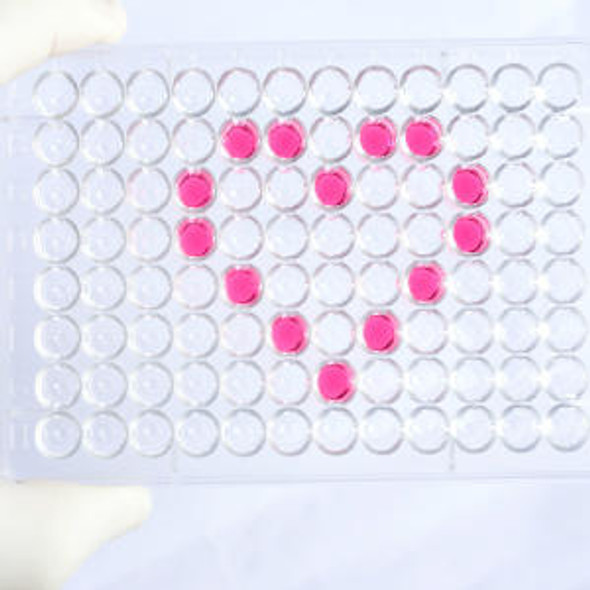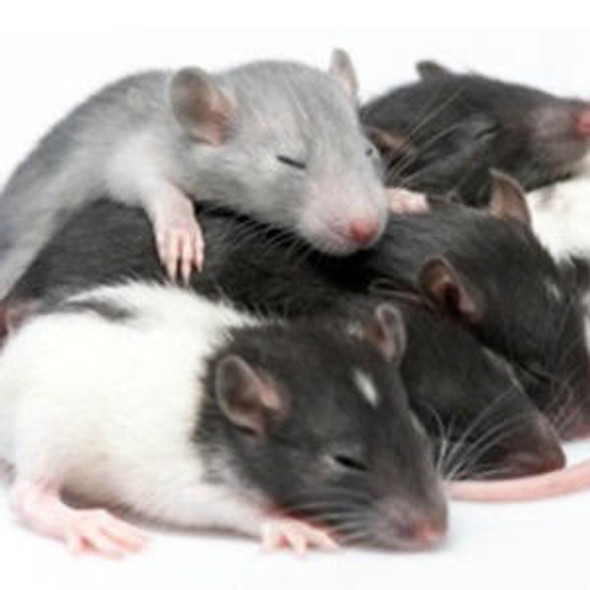Human AGRN (Agrin) ELISA Kit (HUES01528)
- SKU:
- HUES01528
- Product Type:
- ELISA Kit
- Size:
- 96 Assays
- Uniprot:
- O00468
- Sensitivity:
- 0.09ng/mL
- Range:
- 0.16-10ng/mL
- ELISA Type:
- Sandwich
- Synonyms:
- AGRN
- Reactivity:
- Human
- Sample Type:
- Serum, plasma and other biological fluids
- Research Area:
- Developmental Biology
Description
Human AGRN (Agrin) ELISA Kit
Based on the information provided in the URL for the Human AGRN (Agrin) ELISA Kit, we can write a product description as follows:The Human AGRN (Agrin) ELISA Kit is a highly sensitive and specific assay designed for the accurate detection of agrin levels in human biological samples such as serum, plasma, and cell culture supernatants. This kit offers reliable and reproducible results, making it an excellent tool for a wide range of research applications.Agrin is a key protein involved in the formation and maintenance of neuromuscular junctions, playing a crucial role in synaptic function and nerve-muscle communication.
Dysregulation of agrin expression has been linked to various neuromuscular disorders, making it a valuable biomarker for understanding these conditions and potential therapeutic interventions.Overall, the Human AGRN (Agrin) ELISA Kit provides researchers with a valuable tool for studying the role of agrin in neuromuscular diseases and developing novel treatment strategies.
| Assay type: | Sandwich |
| Format: | 96T |
| Assay time: | 4.5h |
| Reactivity: | Human |
| Detection Method: | Colormetric |
| Detection Range: | 0.16-10 ng/mL |
| Sensitivity: | 0.10 ng/mL |
| Sample Volume Required Per Well: | 100µL |
| Sample Type: | Serum, plasma and other biological fluids |
| Specificity: | This kit recognizes Human AGRN in samples. No significant cross-reactivity or interference between Human AGRN and analogues was observed. |
This ELISA kit uses Sandwich-ELISA as the method. The micro ELISA plate provided in this kit has been pre-coated with an antibody specific to Human AGRN. Standards or samples are added to the appropriate micro ELISA plate wells and combined with the specific antibody. Then a biotinylated detection antibody specific for Human AGRN and Avidin-Horseradish Peroxidase (HRP) conjugate are added to each micro plate well successively and incubated. Free components are washed away. The substrate solution is added to each well. Only those wells that contain Human AGRN, biotinylated detection antibody and Avidin-HRP conjugate will appear blue in color. The enzyme-substrate reaction is terminated by adding Stop Solution and the color turns yellow. The optical density (OD) is measured spectrophotometrically at a wavelength of 450 nm ± 2 nm. The OD value is proportional to the concentration of Human AGRN. The concentration of Human AGRN in samples can be calculated by comparing the OD of the samples to the standard curve.
| UniProt Protein Function: | agrin: Plays a central role in the formation and the maintenance of the neuromuscular junction (NMJ), the synapse between motor neuron and skeletal muscle. Ligand of the MUSK signaling complex that directly binds LRP4 in this complex and induces the phosphorylation of MUSK, the kinase of the complex. The activation of MUSK in myotubes induces the formation of NMJ by regulating different processes including the transcription of specific genes and the clustering of AChR in the postsynaptic membrane. Defects in AGRN are a cause of myasthenia, limb-girdle, familial (LGM). A congenital myasthenic syndrome characterized by a typical 'limb girdle' pattern of muscle weakness with small, simplified neuromuscular junctions but normal acetylcholine receptor and acetylcholinesterase function. |
| UniProt Protein Details: | Protein type:Cell adhesion; Cell development/differentiation; Extracellular matrix; Secreted; Secreted, signal peptide Chromosomal Location of Human Ortholog: 1p36. 33 Cellular Component: basal lamina; cell junction; cytosol; extracellular matrix; extracellular region; Golgi lumen; integral component of membrane; lysosomal lumen; plasma membrane; synapse Molecular Function:calcium ion binding; heparan sulfate proteoglycan binding; laminin binding; protein binding; sialic acid binding; structural constituent of cytoskeleton Biological Process: clustering of voltage-gated sodium channels; cytoskeleton organization; extracellular matrix organization; G-protein coupled acetylcholine receptor signaling pathway; glycosaminoglycan biosynthetic process; glycosaminoglycan catabolic process; glycosaminoglycan metabolic process; positive regulation of filopodium formation; positive regulation of GTPase activity; positive regulation of synaptic growth at neuromuscular junction; positive regulation of transcription from RNA polymerase II promoter; receptor clustering; retinoid metabolic process; signal transduction; synapse organization Disease: Myasthenic Syndrome, Congenital, With Pre- And Postsynaptic Defects |
| NCBI Summary: | This gene encodes one of several proteins that are critical in the development of the neuromuscular junction (NMJ), as identified in mouse knock-out studies. The encoded protein contains several laminin G, Kazal type serine protease inhibitor, and epidermal growth factor domains. Additional post-translational modifications occur to add glycosaminoglycans and disulfide bonds. In one family with congenital myasthenic syndrome affecting limb-girdle muscles, a mutation in this gene was found. Alternative splicing results in multiple transcript variants encoding different isoforms. [provided by RefSeq, Mar 2015] |
| UniProt Code: | O00468 |
| NCBI GenInfo Identifier: | 54873613 |
| NCBI Gene ID: | 375790 |
| NCBI Accession: | NP_940978. 2 |
| UniProt Secondary Accession: | O00468,Q5SVA1, Q5SVA2, Q60FE1, Q7KYS8, Q8N4J5, Q96IC1 Q9BTD4, |
| UniProt Related Accession: | O00468 |
| Molecular Weight: | |
| NCBI Full Name: | agrin isoform 2 |
| NCBI Synonym Full Names: | agrin |
| NCBI Official Symbol: | AGRN |
| NCBI Official Synonym Symbols: | CMS8; AGRIN; CMSPPD |
| NCBI Protein Information: | agrin |
| UniProt Protein Name: | Agrin |
| Protein Family: | Agrin |
| UniProt Gene Name: | AGRN |
As the OD values of the standard curve may vary according to the conditions of the actual assay performance (e. g. operator, pipetting technique, washing technique or temperature effects), the operator should establish a standard curve for each test. Typical standard curve and data is provided below for reference only.
| Concentration (ng/mL) | O.D | Average | Corrected |
| 10 | 2.392 2.406 | 2.399 | 2.322 |
| 5 | 1.559 1.585 | 1.572 | 1.495 |
| 2.5 | 0.91 0.894 | 0.902 | 0.825 |
| 1.25 | 0.429 0.445 | 0.437 | 0.36 |
| 0.63 | 0.26 0.256 | 0.258 | 0.181 |
| 0.32 | 0.176 0.174 | 0.175 | 0.098 |
| 0.16 | 0.125 0.129 | 0.127 | 0.05 |
| 0 | 0.069 0.085 | 0.077 | -- |
Precision
Intra-assay Precision (Precision within an assay): 3 samples with low, mid range and high level Human AGRN were tested 20 times on one plate, respectively.
Inter-assay Precision (Precision between assays): 3 samples with low, mid range and high level Human AGRN were tested on 3 different plates, 20 replicates in each plate.
| Intra-assay Precision | Inter-assay Precision | |||||
| Sample | 1 | 2 | 3 | 1 | 2 | 3 |
| n | 20 | 20 | 20 | 20 | 20 | 20 |
| Mean (ng/mL) | 0.54 | 0.94 | 4.84 | 0.57 | 0.86 | 5.08 |
| Standard deviation | 0.04 | 0.04 | 0.20 | 0.04 | 0.05 | 0.18 |
| C V (%) | 7.41 | 4.26 | 4.13 | 7.02 | 5.81 | 3.54 |
Recovery
The recovery of Human AGRN spiked at three different levels in samples throughout the range of the assay was evaluated in various matrices.
| Sample Type | Range (%) | Average Recovery (%) |
| Serum (n=5) | 90-104 | 97 |
| EDTA plasma (n=5) | 91-105 | 97 |
| Cell culture media (n=5) | 85-100 | 92 |
Linearity
Samples were spiked with high concentrations of Human AGRN and diluted with Reference Standard & Sample Diluent to produce samples with values within the range of the assay.
| Serum (n=5) | EDTA plasma (n=5) | Cell culture media (n=5) | ||
| 1:2 | Range (%) | 91-104 | 98-112 | 95-108 |
| Average (%) | 96 | 106 | 102 | |
| 1:4 | Range (%) | 85-98 | 86-100 | 86-99 |
| Average (%) | 92 | 92 | 93 | |
| 1:8 | Range (%) | 92-104 | 85-99 | 88-98 |
| Average (%) | 98 | 90 | 93 | |
| 1:16 | Range (%) | 94-106 | 82-94 | 88-102 |
| Average (%) | 100 | 87 | 93 |
An unopened kit can be stored at 4°C for 1 month. If the kit is not used within 1 month, store the items separately according to the following conditions once the kit is received.
| Item | Specifications | Storage |
| Micro ELISA Plate(Dismountable) | 8 wells ×12 strips | -20°C, 6 months |
| Reference Standard | 2 vials | |
| Concentrated Biotinylated Detection Ab (100×) | 1 vial, 120 µL | |
| Concentrated HRP Conjugate (100×) | 1 vial, 120 µL | -20°C(shading light), 6 months |
| Reference Standard & Sample Diluent | 1 vial, 20 mL | 4°C, 6 months |
| Biotinylated Detection Ab Diluent | 1 vial, 14 mL | |
| HRP Conjugate Diluent | 1 vial, 14 mL | |
| Concentrated Wash Buffer (25×) | 1 vial, 30 mL | |
| Substrate Reagent | 1 vial, 10 mL | 4°C(shading light) |
| Stop Solution | 1 vial, 10 mL | 4°C |
| Plate Sealer | 5 pieces | |
| Product Description | 1 copy | |
| Certificate of Analysis | 1 copy |
- Set standard, test sample and control (zero) wells on the pre-coated plate and record theirpositions. It is recommended to measure each standard and sample in duplicate. Note: addall solutions to the bottom of the plate wells while avoiding contact with the well walls. Ensuresolutions do not foam when adding to the wells.
- Aliquot 100 µL of standard solutions into the standard wells.
- Add 100 µL of Sample / Standard dilution buffer into the control (zero) well.
- Add 100 µL of properly diluted sample (serum, plasma, tissue homogenates and otherbiological fluids) into test sample wells.
- Cover the plate with the sealer provided in the kit and incubate for 90 min at 37 °C.
- Aspirate the liquid from each well, do not wash. Immediately add 100 µL of BiotinylatedDetection Ab working solution to each well. Cover the plate with a plate seal and gently mix. Incubate for 1 hour at 37 °C.
- Aspirate or decant the solution from the plate and add 350 µL of wash buffer to each welland incubate for 1-2 minutes at room temperature. Aspirate the solution from each well andclap the plate on absorbent filter paper to dry. Repeat this process 3 times. Note: a microplatewasher can be used in this step and other wash steps.
- Add 100 µL of HRP Conjugate working solution to each well. Cover with a plate seal andincubate for 30 min at 37 °C.
- Aspirate or decant the solution from each well. Repeat the wash process for five times asconducted in step 7.
- Add 90 µL of Substrate Reagent to each well. Cover with a new plate seal and incubate forapproximately 15 min at 37 °C. Protect the plate from light. Note: the reaction time can beshortened or extended according to the actual color change, but not by more than 30min.
- Add 50 µL of Stop Solution to each well. Note: Adding the stop solution should be done inthe same order as the substrate solution.
- Determine the optical density (OD value) of each well immediately with a microplate readerset at 450 nm.






